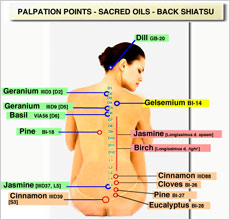
JADE ESTHETICS
Esthetics is commonly thought of as having a sense of the beautiful, but scholars know it as the ancient study of sensory values, sometimes called judgments of sentiment and taste. Judgments of esthetic value clearly relies on our ability to discriminate at a sensory level. This discrimination can dramatically affect one's health. Jade Esthetics studies new ways of seeing and of perceiving the world, bringing better health to individuals. There are traditionally 5 sensori-emotional avenues:Sound

Music appreciation is teaching people what to listen for and to appreciate different types of music. However, esthetically the human voice generates a set of unique frequencies in the form of harmonics, notes, and tones. Every person, as they speak normally, emit some of these frequencies that correspond to the musical scale. This musical scale is comprised of C, C#, D, D#, E, F, F#, G, G#, A, A#, and B. These will be in a range of about 2 to 3 octaves according to that individuals voice and gender. We believe that all 12 musical notes should be included in a healthy person's voice. If there are notes missing in that individuals voice pattern, then that missing note, or notes, will correspond to deficiencies in the body's physiology. This deficiency can be corrected by applying those missing notes to strategic points or zones on the skin, and training the individual to bring those notes back into their speech.
Light

Color blindness is an inaccurate term to describe a lack of perceptual sensitivity to certain colors, a more precise term is Color Vision Deficiency. Color vision deficiency is the more common condition where people cannot fully see colors and discriminate the difference between some complementary colors. Color vision deficiency is not related to visual acuity but is related to genetics and nutritional deficiencies. Red/Green color vision deficiency is by far the most common form and causes problems in distinguishing reds and greens.
The Lüscher color test is a psychological test invented by Dr. Max Lüscher. The Lüscher-Color-Diagnosis measures a person's psychophysical state, his or her ability to withstand stress, to perform, and to communicate. It uncovers the cause of psychological stress, which can lead to physical symptoms. The results of the Lüscher-Color-Diagnostic contain indications pertaining to personal assessment and how psychological stress can be reduced and the resulting physical symptoms can be avoided. It also offers additional information for homeopathic therapy.
Touch


Sensory loss is found in a number of chronic diseases that affect nerve function. The most common is diabetes where the distal nerves of the feet are affected first due to poor circulation. However, more subtle sensory deficits to vibratory tones occur due to internal organ deficits reflecting themselves upon the peripheral dermatomes of the skin. These I call specific distal sensory loss. Sensory nerves receive impulses from internal organs, as well as the skin, eyes, ears, tongue and nose. Even more common are sensitive points upon the skin that reflect irritation of the inner organs. These sensitive points were earliest utilized by the Chinese, but recently expanded upon by homeopaths and by the author. Sensitive points can reveal food allergies, mineral deficiencies, digestive disturbances, as well as indicated herbs, essential oils and homeopathics.
The sensitive points also expand the value and focus of therapeutic massage.
Taste

The senses of smell and taste monitor the intake into the body of all nutrients and airborne chemicals required for life. The senses should provide a warning for toxic fumes, smoke, leaking gas, spoiled food, and dangerous environments. Importantly, they also determine the flavor and palatability of foods and beverages, but provide a vast array of gastronomic delights and delusions. But do the senses equally monitor the day-to-day requirement of nutrients outside of sugar, fats, and proteins thus preventing nutritional deficiency or even starvation? The Jade Homeopathic Taste Test proves it does not. In fact, when the body becomes deficient in vital trace minerals, it loses all sensory perceptions which perpetuates a metabolic deficiency, causing a faulty dietary and leading to premature aging, decreased vitality, nutritional deficiencies, and gravitation towards metabolic syndrome X, today's obesity pandemic.
Smell

Unlike vision and hearing, smell and taste tests are not routinely performed by physicians. Changes in taste sensations can result from various medical conditions. One common cause is acid reflux where stomach acid is regurgitated into the throat and mouth giving a bad taste that can be described as an acid taste or metallic taste. This perversion can lead to over eating. Smell loss can be an early sign of some diseases, but more commonly it is associated with food allergies and nutritional deficiencies. Olfactory disturbances of the chemical senses are common. Each year hundreds of thousands of patients complain to their physician about disturbances of smell or taste, yet no treatment is offered. This is despite the fact that often olfactory loss or perversion goes unnoticed and is due to faulty dietary and gut putrefaction. Only during the last few years, Jade tools have become available which allow the assessment of changes in quality of life brought about through olfactory disorders.
Conclusion
All five senses are vital to maintaining or regaining health. Jade Therapies aim to rehabilitate the senses making it easier to change bad habits, faulty dietary, if not signs of depression and fatigue. They are a vital aspect to health care yet largely ignored.Training
As a special package will provide ONE day training session for FREE! - so you can put this unit to work right away!!!
© 2009 Quantum Life Canada Inc. All Rights Reserved.